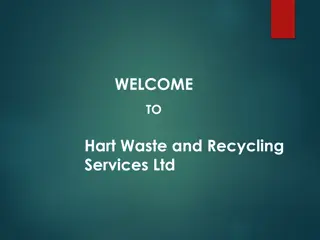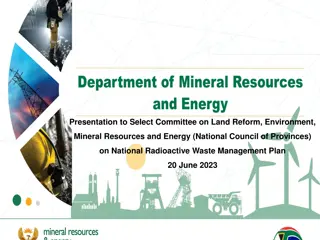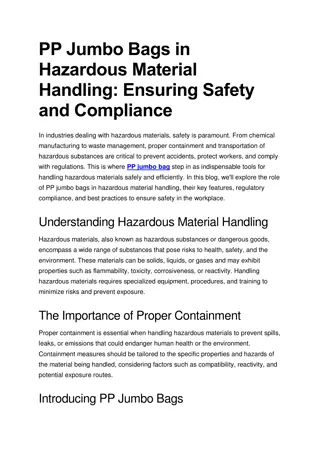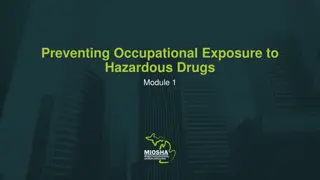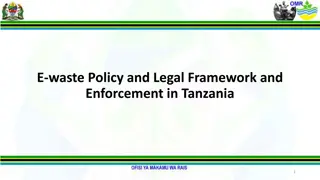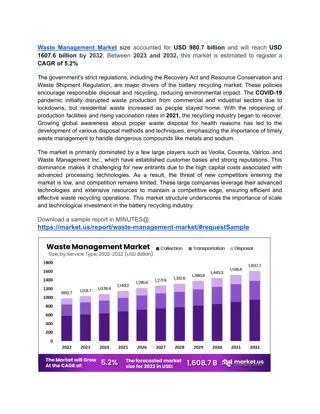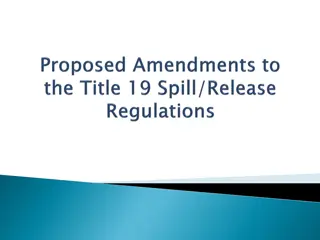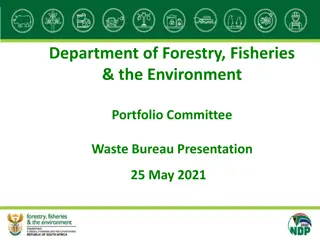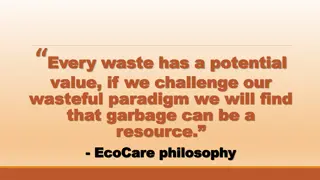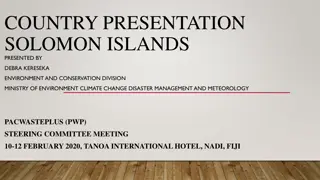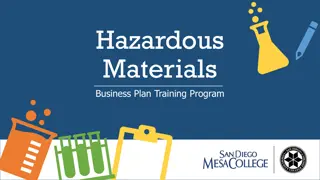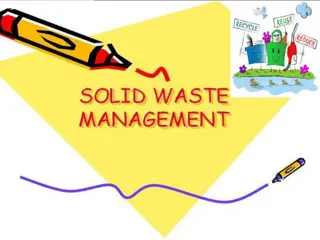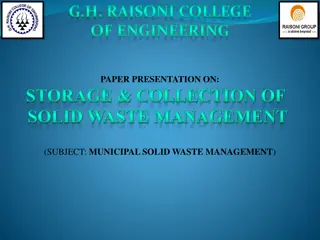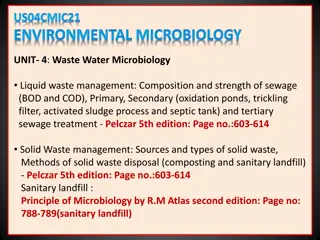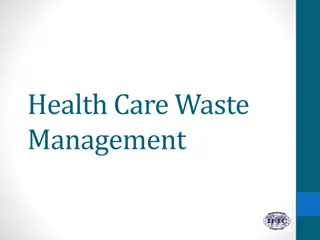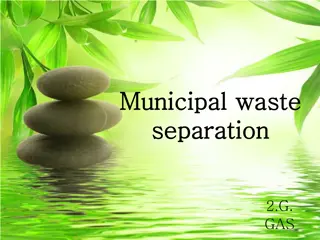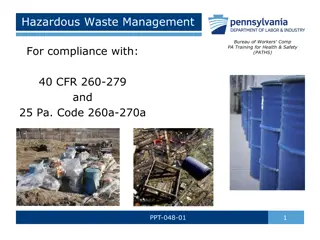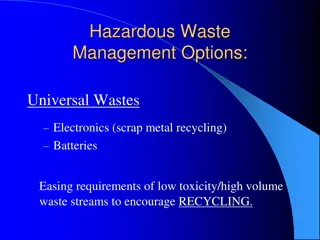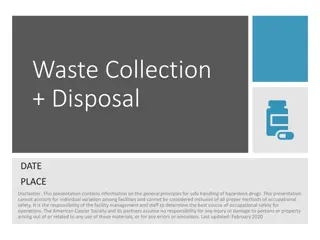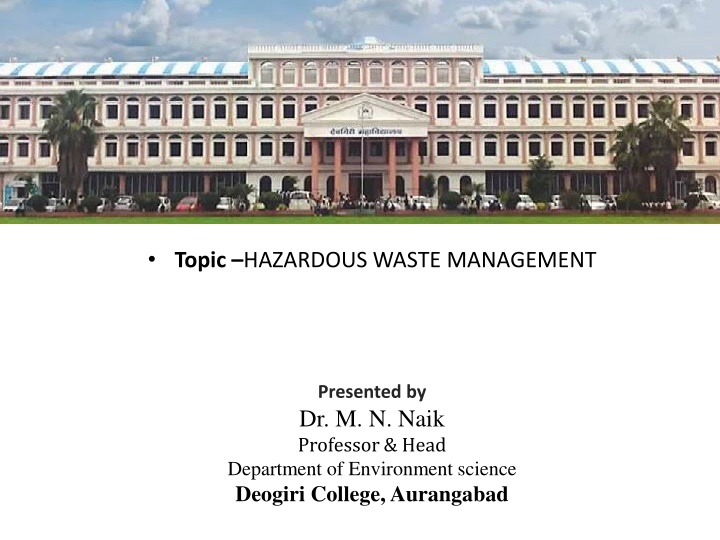
Hazardous Waste Management: A Historical Perspective on Environmental Issues
Explore the historical roots of hazardous waste management, from its emergence as a leading environmental issue in the early 1980s to its continued importance in the 21st century. Learn about the threats posed by hazardous waste to human health and the environment, along with landmark episodes such as the DDT controversy and incidents like the Minamata disaster and Love Canal contamination. Understand the significance of proper hazardous waste management practices in safeguarding our planet.
Download Presentation

Please find below an Image/Link to download the presentation.
The content on the website is provided AS IS for your information and personal use only. It may not be sold, licensed, or shared on other websites without obtaining consent from the author. If you encounter any issues during the download, it is possible that the publisher has removed the file from their server.
You are allowed to download the files provided on this website for personal or commercial use, subject to the condition that they are used lawfully. All files are the property of their respective owners.
The content on the website is provided AS IS for your information and personal use only. It may not be sold, licensed, or shared on other websites without obtaining consent from the author.
E N D
Presentation Transcript
Topic HAZARDOUS WASTE MANAGEMENT Presented by Dr. M. N. Naik Professor & Head Department of Environment science Deogiri College, Aurangabad
What is H.W? Waste [ solids, sludges, liquids, containerized gases] other than radioactive [ and infectious] wastes which, by reason of their chemical activity or toxic, explosive, corrosive or other characteristics, causes danger or likely will cause danger to health or the environment, whether alone or when coming in to contact with other waste UNEP Dec 1985
Historical Roots In the early 1980, H. W leading env. Issue of society In 21th century, scientific information shows some potential problems with global ecosystem, hazardous waste still continues to attract for more attention when measured by the amount of federal spent for environmental programs. Hazardous waste accounted about 50% of environmental consultancy market (total 8.2 billions $) in 1991. In remediation technology market in year 1998 about 36% (of total 11.1 billions $) is the share for hazardous waste remediation.
Consultancy market In 1991 (8.2 billions) air quality 7% water quality 36% 36% solid waste 7% hazardoue waste 50%
Remediation market 1998 (11.1 billion $) remediation construction 33% H.W. Remedaition 36% water suply 10% waste water 14% air & solid wastes 7%
Why Hazardous waste has commanded such importance.. Threat to human health or to its environment. Problem of H.W was not emerged overnight, but env. Contamination by toxic substance from waste or other sources has long history. For e.g. Romans suffered from lead poisoning two millennia ago.
Landmark episodes 1. DDT Rachel Carlson s book Silent Springs in 1962 has create awareness attracted peoples attention to DDT residue in different places. (sea, food chain, Antarctic penguins & in man) & its association with lack of fertility. Mercury Hg has different toxicologic properties depending upon its chemical status. The organic form of Hg ( methyl mercury from chemical plant in Japan led Minamata disaster in 1950. Love canal- In USA love canal is always be the symbol of environmental contamination by hazardous waste. Dioxin is one of the toxicant. Time Beach it is highly publicized episode in America about occurrence of Hazardous waste in Time Beach, Missouri. The beach contaminated from chemical plant near St. Louis. 2. 3. 4.
Listed waste 1. F- list:- those waste resulting generally from chemicals that have been used in chemical plant for their intended purpose and subsequently becomes waste. 2. K-list :- those wastes from a group of 17 industries ( such as; wood preservation, inorganic pigment manufacturing, inorganic chemical manufacturing, explosive manufacturing, petroleum reimaging, iron and steel production, primary copper production, primary lead production, etc) 3. P-list :- discarded unused commercial chemicals that have been designated as actually toxic. 4. U-list :- discarded unused commercial chemicals that have been designated as actually toxic, but that also have one or more of the four hazardous waste characteristics. manufacturing, manufacturing, organic chemical pesticides

